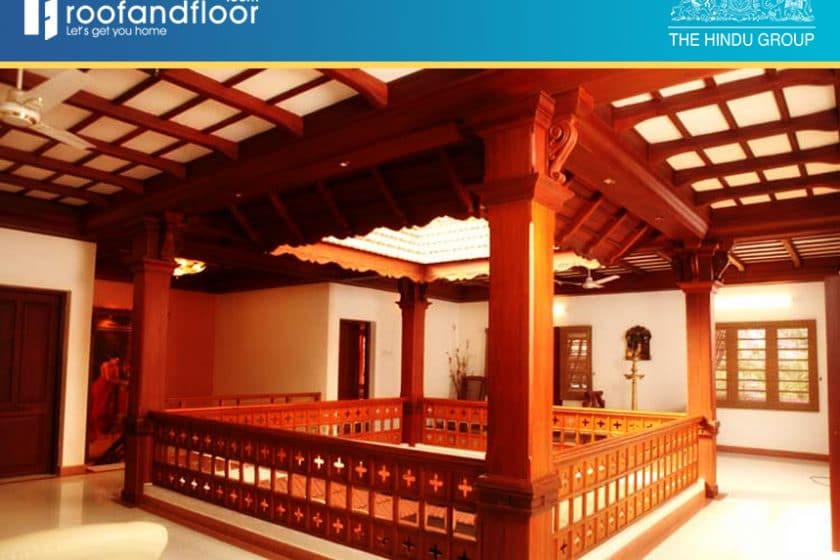If you have ever visited Kerala or seen glimpses of it onscreen, one indelibly quaint memory of it you’re likely to have is that of the traditional architectural style of the homes – called Nalukettu houses. ‘Nalu’ means four and ‘kettu’ means built-up sides. Depending on the castes, the Nalukettu houses are also referred to as tharavadu, kovilakam, kottaram, meda or illam.
A Nalukettu is typically a rectangular structure where four blocks and joined together by an open courtyard. The blocks are referred to Vadakkini (northern block), Padinjattini (western block), Kizhakkini (eastern block) and Thekkini (southern block).
As part of a Nalukettu house, one can find the following:
Padippura – this is the entrance to the compound. It is characterized by a step and tiled roof. It forms part of the compound wall.
Poomukham – serving as a portico for the home, the Poomukham is a space that has tiled roofing with supporting pillars. They open out to the sides and have a concrete platform running along the edge.
Chuttu verandah – this is a corridor that typically goes around the house. It also houses the Charupady which is a wooden seating arrangement.
Nadumuttom – this is the central courtyard of the structure which is open to the sky. It usually houses a tulasi plant in the centre.
Pooja space – the north-east corner of the house houses the room for worship. The idols of face east or west.
Kulam – this is a small lotus pond at the end of the Chuttu Verandah. The presence of this water body was believed to enhance the flow of energy in the house.
Traditional Nalukettu houses were built with materials sourced locally. They included red bricks, mud, and wood. Extended versions of Nalukettu are called Ettukettu (8 blocks with 2 courtyards) or Padhinarukettu (16 blocks with 4 courtyards). However, in modern times, their existence is rare.
Nalukettu houses were perfect for the matrilineal joint family system that prevailed in Kerala. It allowed the entire family to enjoy the commonly owned facilities. This practice has radically changed in the recent years with people preferring nuclear family setup to a joint family. These small units no longer require such large homes, hence they are not built as often.
Considering that area available for building is becoming scarce, building a Nalukettu is not an option for families. Also, the construction costs involved in building such a home are high and are deterrents to those who have plans to build them.
Today Nalukettus are often used as tourist attractions or preserved painstakingly by family members who are willing to finance the expenditure of maintenance. If you would like to use inspiration from this special architectural style, you could start with
- Gaining a good understanding of the local climate and how cardinal directions affect energy flow in homes
- Utilizing locally available materials and
- Factoring in space where family and friends are encouraged to spend quality time together.
Tradition need not be phased out completely in favour of the modern. One can adopt architectural styles of the past in a way that suits contemporary needs, all the while paying homage to a glorious bygone era.

